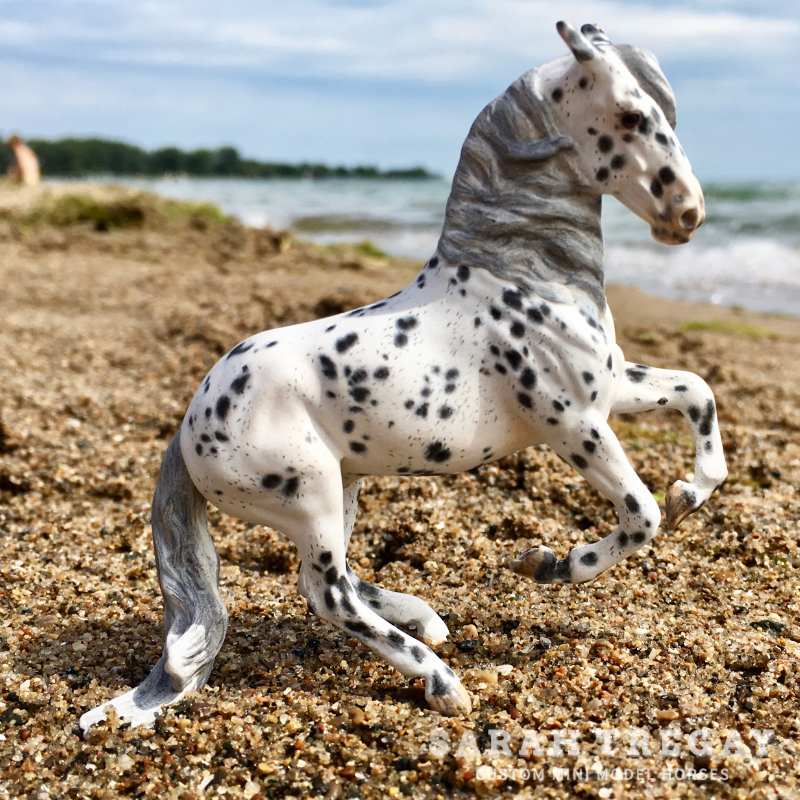SARAH TREGAY
CUSTOM MINI MODEL HORSES
Model Horse Coat Colors
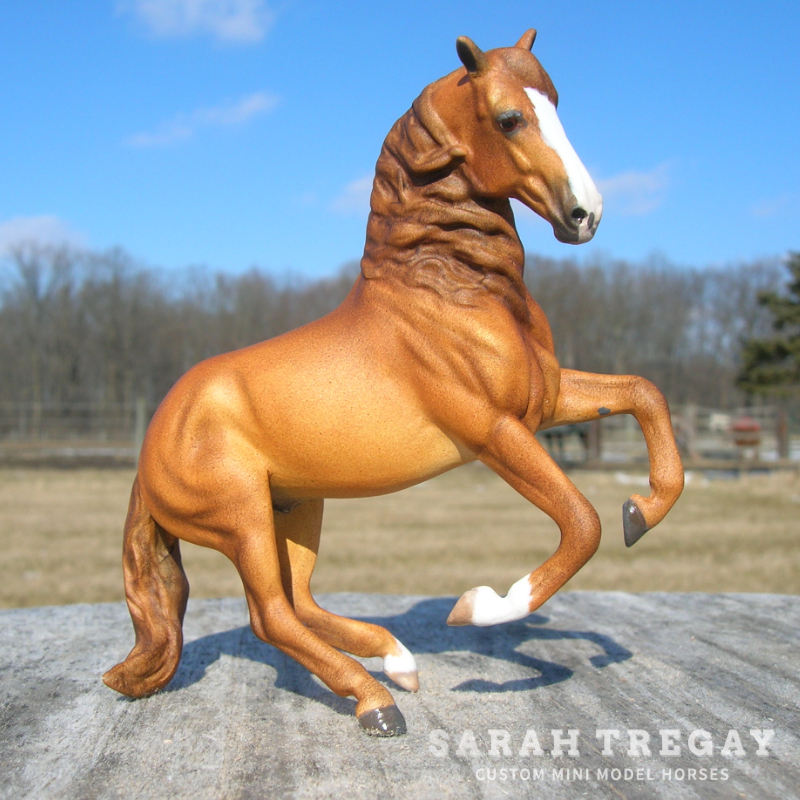
Chestnut
Chestnut horses have red pigmentation. The mane and tail may match the body color, or be lighter or darker. Horses with red base color display the pigment pheomelanin. The chestnut extension genotype is ee. A chestnut agouti genotype can be AA, Aa, or aa.

Liver Chestnut
A member of the chestnut family, a liver chestnut horse is simply a dark chestnut. Hairs will be redish/brownish throughout without black points. Manes and tails can be lighter, like this one, or darker than the body color.
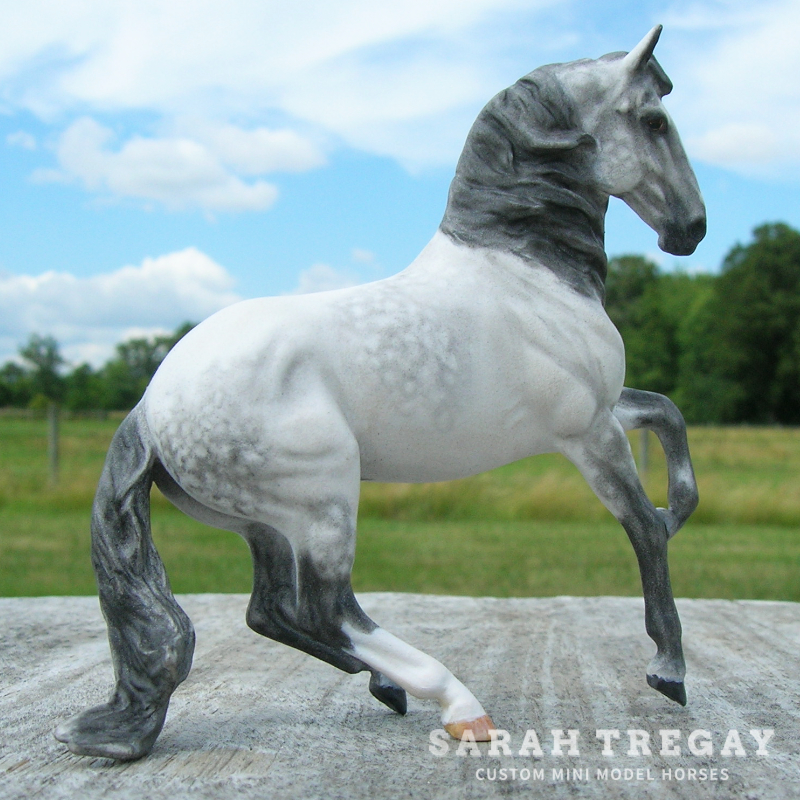
Dapple Gray
A horse with black skin but white or mixed dark and white hairs. Gray horses can be born any color, and lighten as they age. A dapple gray coat has lighter rings of grey hairs, called dapples, scattered throughout. Grey coat color is due to the presence of the dominant allele, G, at the grey locus. The genotype of a horse with this allele present will be either GG or Gg. (G being the dominant grey allele and g the recessive.)
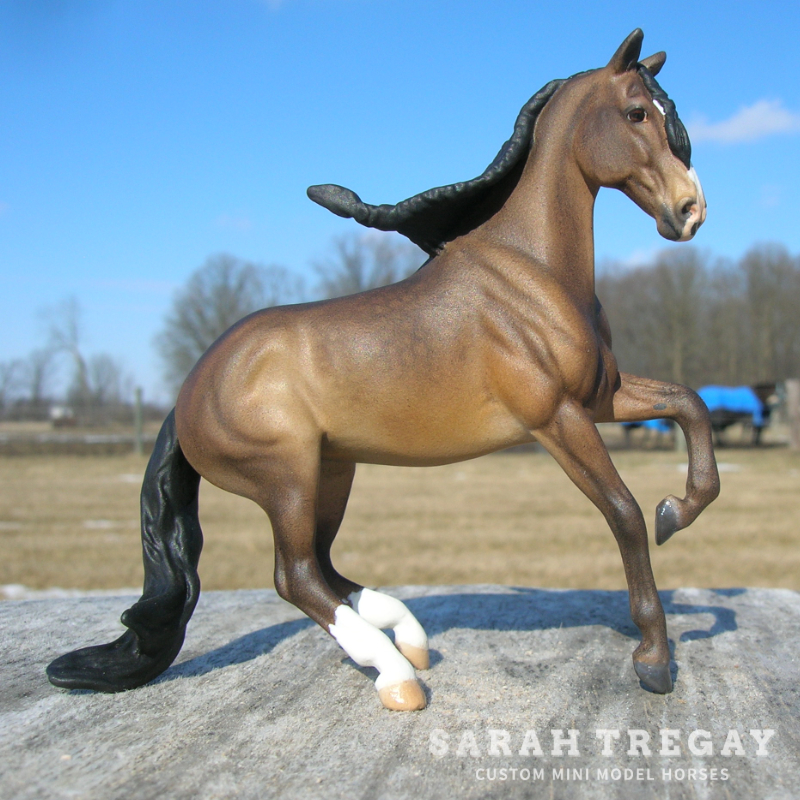
Brown
Brown horses often resemble bays, but they have a specific genetic makeup. Seal browns are the expression of the Agouti gene on a black base coat. A seal brown will have lighter tones on the muzzle and flank.

Black
Black horses have the extension gene E. Extension has two alleles, E and e, that encode for black or red pigments.

Bay
The body color of a bay horse will be a shade of brown, from golden hues to deep red, or as dark as chocolate. A bay will have black points, including the mane, tail, lower legs, and tips of the ears. Bays can be either EE or Ee. Agouti loci controls the distribution of black pigment. The dominant allele, A, restricts black points to tips of ears, legs, mane and tail. The recessive allele, a, allows black to be expressed throughout the body. Bays can be AA or Aa.
Dilute Coat Colors

Grulla or Blue Dun
A horse with a black base color and the dun gene. The dominant allele, D, dilutes black and red pigmentation and leaves the points unaffected. Both genotypes of DD and Dd will produce dun horses. Coat is solid "mouse-colored" gray or silver (can also be almost brownish-gray) with black or dark gray primitive markings such as a dorsal stripe and leg barring, shoulder striping and cobwebbing.
Pinto Patterns
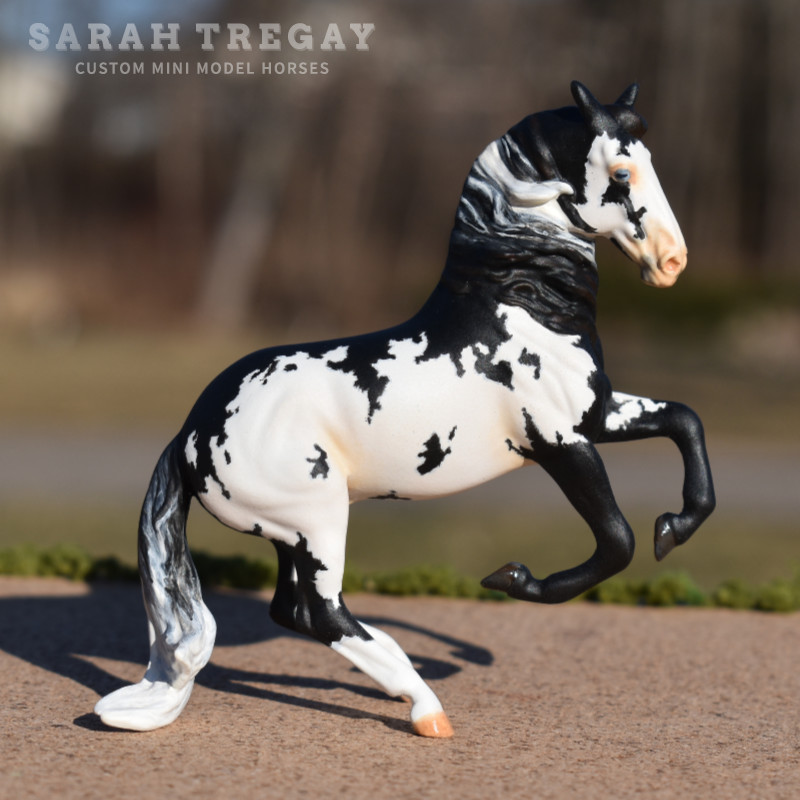
Frame Overo
This frame overo has a black base color. A Frame Overo horse will have patches of white hair “framed” by colored hair. The patches have a jagged outline and tend to be horizontally displayed on the barrel and neck and usually will not cross the topline. The skin is pink beneath the white patches and dark beneath the colored areas. Usually, the legs are colored, but when the legs have white markings, these are usually produced by a different white pattern gene. White on the face is common. The mane and tail are often colored.

Tobiano
This tobiano has a buckskin base color. Buckskin horses have one cream allele diluting a bay base coat. A tobiano has white patches with rounded, smooth edges over the topline and extend downward, usually leaving the head, chest, and sides colored. The legs are usually white below the knees and hocks. Typically the head is colored but can also have the common white markings and the mane and tail are often of two toned.
Appaloosa Patterns
Rare Coat Colors

Brindle
This brindle has a grulla base color. A brindle pattern appears as vertical stripes along the neck, back, hindquarters, and upper legs. A brindle can have a base coat color of any color. Recorded examples have been bay, chestnut, palomino, and dun. Earliest documented cases were said to have red dun or grulla (pictured) as a base coat. The stripes can be lighter or darker than the base coat.
- © Sarah Tregay 2022. All rights reserved.
- Template by HTML5 UP



